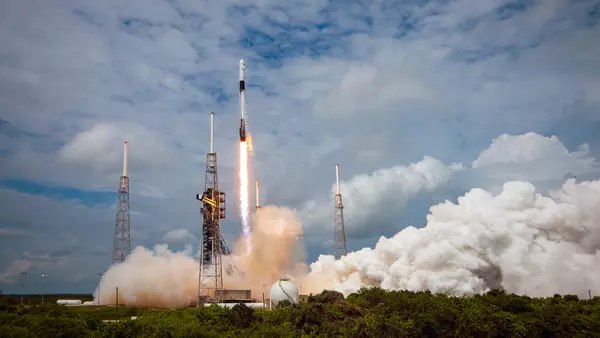Commonwealth spending on research and development as a proportion of GDP is expected to be the lowest on record this financial year, disappointing research peak bodies as attention turns to next week’s Budget.
The Department of Industry, Science, and Resources is forecasting that government spend on R&D will be 0.49 per cent of GDP in financial year 2022-23. Previously, the lowest spend was 0.50 per cent of GDP in financial year 2018-19.
In the decade between 2011-12 and 2021-22, government investment in R&D programs is forecast to fall from 0.67 to 0.51 as a proportion of GDP. The previous peak in proportional R&D spend was 0.73 per cent in 1993-94.
The Department is also forecasting a decline in total government R&D investment spending in inflation adjusted terms (2020-21 dollars). Compared to the previous financial year, government spend on R&D is forecast to fall by about $160 million in inflation adjusted dollars.
Labor’s election policy platform included a commitment to push overall Australian R&D investment “closer to three per cent of GDP” from 1.79 per cent, as of 2020.

The latest Science, Research, and Innovation (SRI) budget tables were released last Friday, and includes data dating back to 1978-79. The tables track government investment in R&D programs and activities across all portfolios.
It includes CSIRO, ANSTO, the Australian Research Council grants, National Health and Medical Research Council research grants, the Defence Science and Technology Group, funding awarded through the Medical Research Future Fund, the Australian Renewable Energy Agency (ARENA), the Cooperative Research Centres Program, and the R&D Tax Incentive, among others.
Science and Technology Australia chief executive Misha Schubert highlighted that compared to 2012-13, government R&D investment is forecast to be lesser, in inflation adjusted dollars, by “a little under half a billion – or 0.15 per cent of GDP”. This represents a drop in the overall level of government payments by 0.8 per cent.
“We need to turn that around as swiftly as humanly possible – or we risk Australia’s future economic prosperity,” she told InnovationAus.com.
“Right now, the world is locked in a fierce science and technology race, as other countries strategically invest to secure their own economic futures through science breakthroughs and innovation. The US CHIPS and Science Act will supercharge science investment by $52 billion, while the UK is also dramatically ramping up investment in R&D.
“Australia must match our global competitors with bold steps to escalate public investment in R&D and maximise our opportunities to be creators, not consumers, of the powerful advances in frontier science and technology ahead.”
Health and medical research peak body Research Australia’s chief executive and managing director Nadia Levin told InnovationAus.com that she’s “not surprised, just sad and frustrated”.
“Frankly, in real terms we’re going backwards… that is of the biggest concern because we’re digging the hole, we’re making the problem even bigger and kicking it on to future generations where it has the potential to become impossible to sort out,” Ms Levin said.
In its pre-budget submission, Research Australia called on the government to commit to increasing government investment in R&D to 0.75 per cent over the forward estimates. On the importance of that number, Ms Levin said Australian R&D funding needs to “not only keep pace with inflation but it’s ensuring that we reverse the backward trend”.
Government spend on R&D programs in nominal terms has reached a peak of $12.1 billion, exceeding the previous peak of $11.8 billion in 2021-22. The value of the R&D Tax Incentive program — accounting for more than a quarter of total government R&D spending — is expected to be at its highest level in 2022-23.
The most recent SRI budget tables do not include the $15 billion National Reconstruction Fund and $1.6 billion for Australia’s Economic Accelerator, both of which recently passed Parliament and are yet to dole out any funding.
Ms Levin said that while she thinks the programs are very good, there needs to complementary programs supporting blue sky research.
Without this, she argues, “we will reach a point [where] we find ourselves without enough implementation opportunities or translation opportunities because we haven’t been paying attention to the whole of the pipeline”.
Looking to next Tuesday’s federal Budget, Ms Levin said Research Australia is “hopeful”.
“I don’t know that I’m overly optimistic, but I look for cause to celebrate,” Ms Levin said.
Australian Academy of Science president Professor Chennupati Jagadish warned that government R&D investment as a proportion of GDP is at a “crisis point”.
He also reiterated the Academy’s pre-Budget submission call to review the research and science sector to “create a fit-for-purpose research enterprise able to support and advance science in Australia and to support our economy”.
“Reversing the downward trend of government investment in R&D is not the work of any single budget. It will take a decade or more of commitment and effort from government, industry and the higher education sector. Work must start today,” Professor Jagadish told InnovationAus.com.
Although Australia matched the OECD average on total R&D expenditure as a proportion of GDP in 2008, as of 2020 it was about 0.9 points beneath it.
The fall in government R&D spending is also reflected in data collected by the Australian Bureau of statistics on expenditure within Commonwealth and state government organisations.
Business expenditure on R&D has also stagnated. In February, Mr Husic urged businesses to increase their contributions to national R&D expenditure.
As a proportion of GDP, the latest data on higher education expenditure on R&D also indicates a fall since the last ABS reporting period. Research spending at universities is being reviewed as a part of the Universities Accord.
Industry and Science minister Ed Husic was contacted for comment, but a response had not been received at the time of publication.







